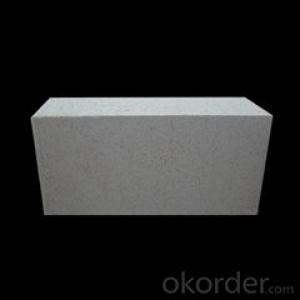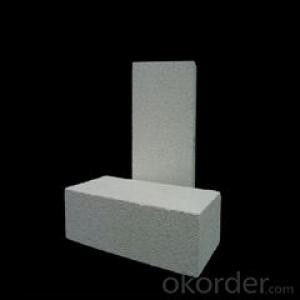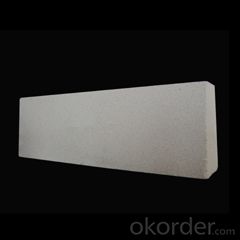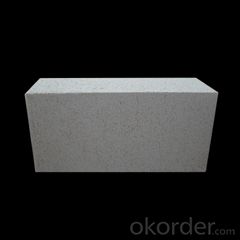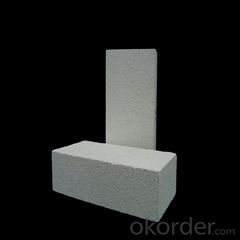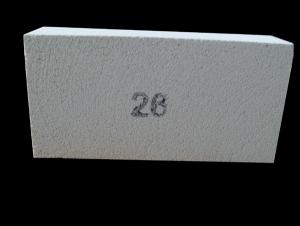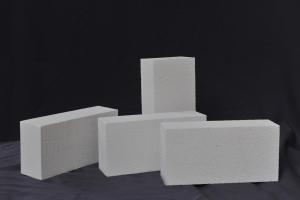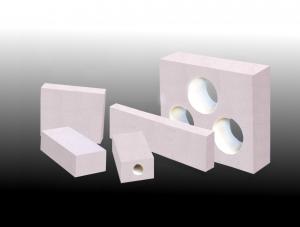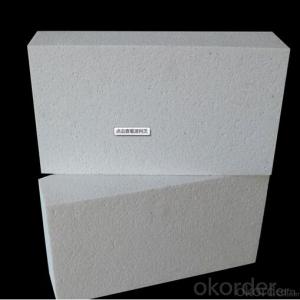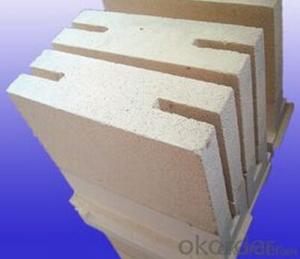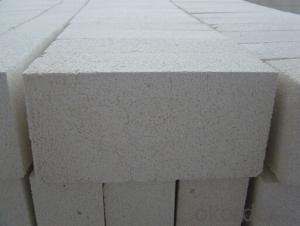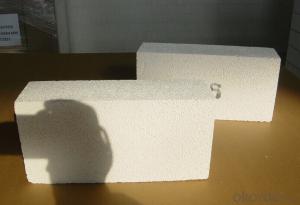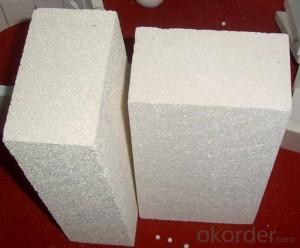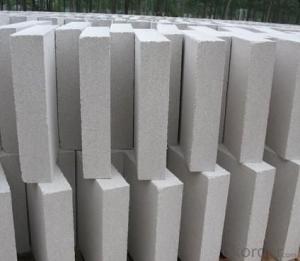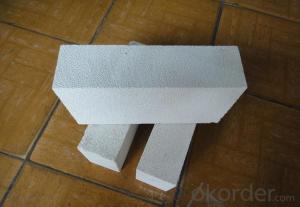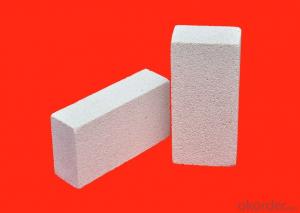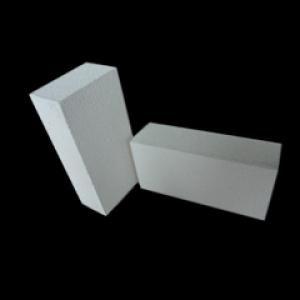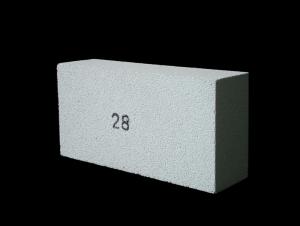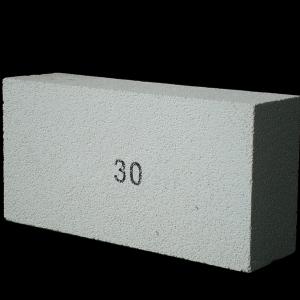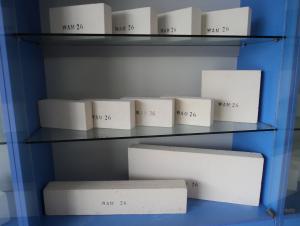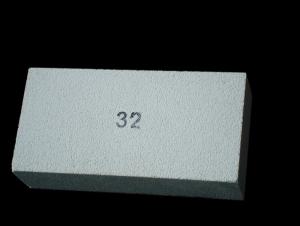Insulating Fire Brick - Refractory Mullite Insulating Refractory Brick JM 88
- Loading Port:
- Shanghai
- Payment Terms:
- TT OR LC
- Min Order Qty:
- 5000 kg
- Supply Capability:
- 10000 kg/month
OKorder Service Pledge
OKorder Financial Service
You Might Also Like
Refractory mullite insulating refractory brick JM 23
Okorder series heat insulation brick
Okorder series thermal insulation brick is an effective, energy saving, low carbon, environmental protection advanced, according to the ASTM standard manufacturing products. Okorder series products are best Li Ning and insulation in all types of industrial furnaces in the metallurgical field, aluminum, petrochemical, electric power and glass ceramic materials. They can be used as part of the working layer of thermal insulation or non - melting. Products have been widely used in the following furnace, achieved satisfactory results.
Application of heat preservation brick
Metallurgical Industry: blast furnace, hot blast furnace, heating furnace, etc..
Petrochemical Industry: ethylene cracking furnace, hydrogen production furnace, primary reformer, heating furnace, etc..
Ceramic industry: roller kiln, kiln, etc..
Glass industry: glass furnace regenerator, etc.
Carbon industry: carbon furnace, etc..
Aluminum electrolysis industry: aluminum reduction cell, etc.
Other industries: tunnel kiln, shuttle kiln, etc..
Advantages of heat insulation brick
Low thermal conductivity: more porosity will bring good thermal insulation effect, energy saving.
High crushing strength: high crushing strength, volume stability.
Low heat storage: small heat storage to absorb more heat, energy-saving effect is obvious.
Gao Chundu: iron, alkali metal impurity content is low.
The precise size: Brick size processing precision, special shape cutting and grinding, accelerate the brickwork.
Insulating brick picture
Common problem solutions
1. What products do you have?
We have all kinds of refractory bricks, refractory casting materials, mortar, cement, ceramic fiber products, etc..
Or you can browse our products to choose what you need.
2. How to control product quality?
With strict quality control system throughout the material selection and production process, we have the quality of refractory materials and ceramic fiber products to meet customer requirements.
From the selection of raw materials, the quality of our control to start. The quality certificate of the raw material is required, each batch of the products are to be tested in the use of the forward line. In the production process, the quality control by the workers, and then each piece of classification, and through the quality supervision and inspection.
3. Can you give me a brief introduction to the application of your product?
My company is mainly engaged in refractories in the steel, cement, glass, ceramics, petrochemical, electric power and other industries.
4. What information do you need if I need you?
In order to select the right products, we will provide us with information, such as the United States, technical data, order quantity, product application, etc..
If you have any questions, please contact us.
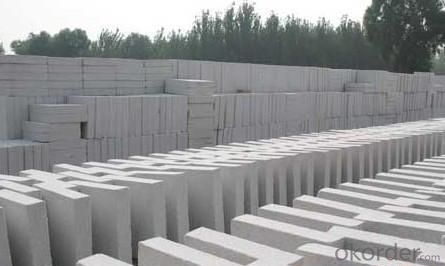
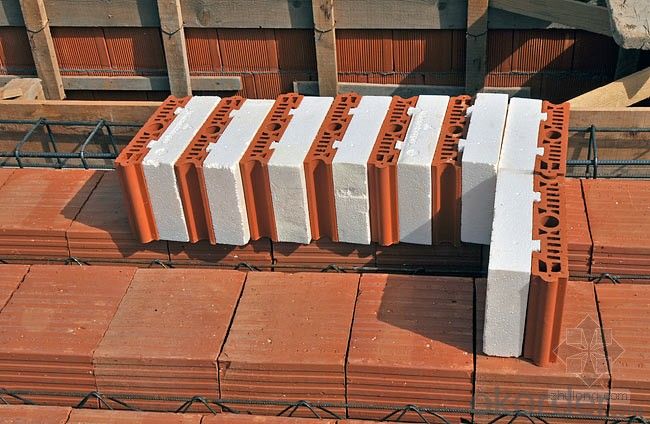
- Q: Can insulating fire bricks be used in boilers for residential heating?
- Yes, insulating fire bricks can be used in boilers for residential heating. Insulating fire bricks are designed to withstand high temperatures and provide excellent thermal insulation properties. These bricks are commonly used in the construction of boilers and furnaces due to their ability to retain heat and prevent heat loss. They can help improve the energy efficiency of the boiler system by reducing heat transfer to the surroundings, allowing for more efficient heating and lower energy consumption. Additionally, insulating fire bricks are durable and resistant to thermal shock, making them suitable for the high temperatures and rapid temperature changes commonly experienced in boilers. Therefore, using insulating fire bricks in residential heating boilers can help improve their performance and energy efficiency.
- Q: Can insulating fire bricks be used in copper smelting furnaces?
- Yes, insulating fire bricks can be used in copper smelting furnaces. Insulating fire bricks are designed to withstand high temperatures and provide excellent insulation, making them ideal for use in furnaces. They are made from materials that can handle the extreme heat generated during the smelting process and can effectively retain and reflect heat back into the furnace. This helps to maintain the desired temperature and improve energy efficiency. Additionally, insulating fire bricks can help to reduce heat loss, resulting in faster and more efficient copper smelting. Therefore, using insulating fire bricks in copper smelting furnaces is a common practice in the industry.
- Q: Can insulating fire bricks be used in the construction of lime calciners?
- Yes, insulating fire bricks can be used in the construction of lime calciners. Lime calciners require high temperatures to produce lime, and insulating fire bricks are designed to withstand and retain heat. These bricks have low thermal conductivity, allowing them to effectively insulate the calciner and prevent heat loss. Additionally, insulating fire bricks are lightweight, making them easier to handle and install in the construction of lime calciners.
- Q: Can insulating fire bricks be used in chimneys and fireplaces?
- Yes, insulating fire bricks can be used in chimneys and fireplaces. Insulating fire bricks are specially designed to withstand high temperatures and provide excellent insulation. They are made from lightweight materials, such as ceramic fibers or refractory materials, which help to minimize heat transfer. This makes them an ideal choice for lining chimneys and fireplaces, as they can help to keep the heat inside the firebox and prevent it from escaping through the chimney. Additionally, insulating fire bricks can also help to improve the efficiency of the heating system by reducing heat loss and improving the overall heat output. However, it is important to note that insulating fire bricks should only be used in the appropriate areas of the chimney or fireplace, such as the firebox, and not in the smoke chamber or flue, as these areas require different types of bricks that can withstand the corrosive effects of the flue gases.
- Q: Is it possible to recycle used insulating fire bricks?
- Yes, it is possible to recycle used insulating fire bricks. These bricks can be crushed, ground, or shredded, and then the resulting material can be used as a raw material in the production of new bricks or as an aggregate in construction materials. Recycling used insulating fire bricks helps to reduce waste and conserve resources.
- Q: Can insulating fire bricks be used in boilers for steam generation?
- Boilers can utilize insulating fire bricks for steam generation. These bricks are composed of lightweight materials, such as ceramic fibers or expanded clay, that possess exceptional insulation properties. Their low thermal conductivity ensures effective heat transfer prevention. The insulation within boilers is crucial for minimizing heat loss and enhancing energy efficiency. Insulating fire bricks can be utilized to line the boiler combustion chamber's walls, roof, and floor. By creating a highly insulating barrier, they retain heat within the chamber, enabling more efficient steam generation. Additionally, insulating fire bricks possess the ability to withstand high temperatures, making them suitable for boilers that involve elevated temperature steam generation. They also exhibit resistance to thermal shock, which is significant in scenarios where temperature fluctuations can arise. In conclusion, insulating fire bricks offer considerable advantages for boiler applications. They provide exceptional insulation, can endure high temperatures, and contribute to enhanced energy efficiency in steam generation.
- Q: Are insulating fire bricks resistant to salt attack?
- Insulating fire bricks are not typically resistant to salt attack. Salt attack refers to the corrosion and degradation of materials when exposed to salt or saltwater. While insulating fire bricks are designed to have excellent thermal insulation properties, they are not specifically formulated to withstand the corrosive effects of salt. Salt attack can lead to the breakdown of the bricks' structure, reducing their performance and durability over time. If these bricks are regularly exposed to salt or saltwater, it is likely that they will experience accelerated degradation and may not provide long-term reliability in such environments. To ensure resistance to salt attack, it is recommended to use refractory materials specifically designed for this purpose, such as salt-resistant fire bricks or refractories with higher alumina content. These materials have been developed to withstand the corrosive effects of salt and are more suitable for applications where exposure to salt or saltwater is expected.
- Q: Are insulating fire bricks resistant to thermal spalling?
- Yes, insulating fire bricks are resistant to thermal spalling. Thermal spalling refers to the phenomenon where a material cracks or breaks due to rapid temperature changes or thermal shock. Insulating fire bricks are specially designed to withstand high temperatures and thermal cycling without spalling. They have a low thermal conductivity, which means they can effectively insulate against heat transfer and minimize the stress caused by thermal expansion and contraction. Additionally, the composition and structure of insulating fire bricks are engineered to provide excellent resistance to thermal spalling, making them a reliable choice for applications that involve extreme heat conditions.
- Q: Can insulating fire bricks be used in the construction of combustion flues?
- Yes, insulating fire bricks can be used in the construction of combustion flues. Insulating fire bricks are designed to withstand high temperatures, making them ideal for use in environments where heat resistance is required. Combustion flues are exposed to extreme heat and gases generated during combustion, and insulating fire bricks can help protect the flue structure from the intense heat and prevent heat loss. Additionally, these bricks have low thermal conductivity, meaning they are effective in insulating and retaining heat within the flue. This can help improve the efficiency of the combustion process and minimize energy waste. Overall, the use of insulating fire bricks in the construction of combustion flues can enhance safety, efficiency, and longevity of the flue system.
- Q: Can insulating fire bricks be used in ladle covers?
- Yes, insulating fire bricks can be used in ladle covers. Insulating fire bricks are designed to withstand high temperatures and provide thermal insulation. They are commonly used in various industrial applications, including ladle covers, to retain heat and prevent heat loss.
Send your message to us
Insulating Fire Brick - Refractory Mullite Insulating Refractory Brick JM 88
- Loading Port:
- Shanghai
- Payment Terms:
- TT OR LC
- Min Order Qty:
- 5000 kg
- Supply Capability:
- 10000 kg/month
OKorder Service Pledge
OKorder Financial Service
Similar products
Hot products
Hot Searches
Related keywords


